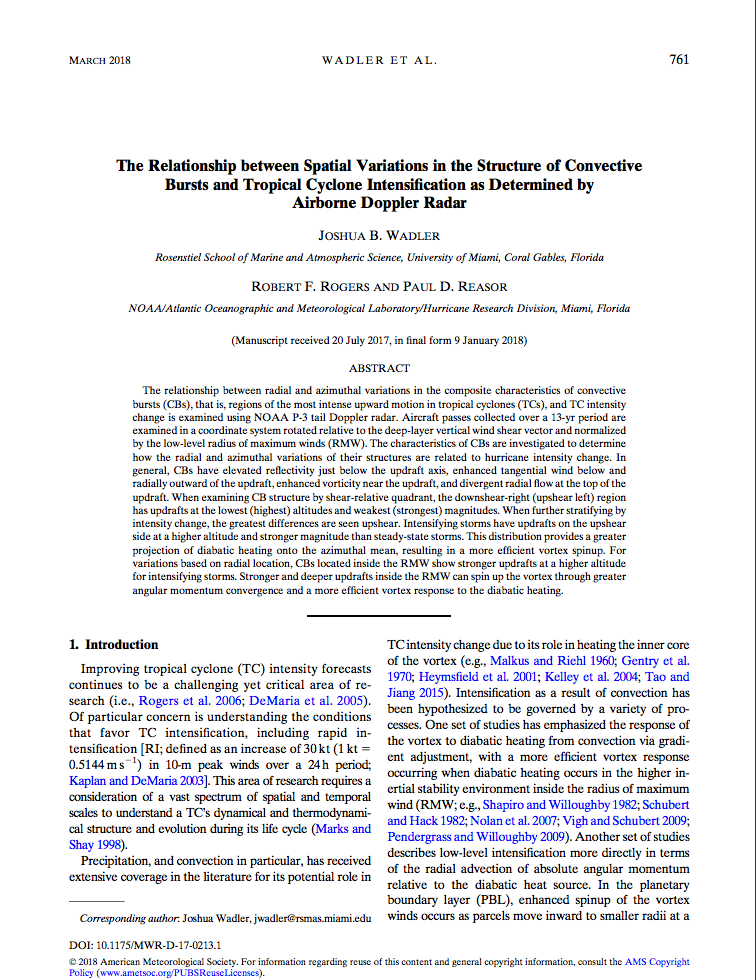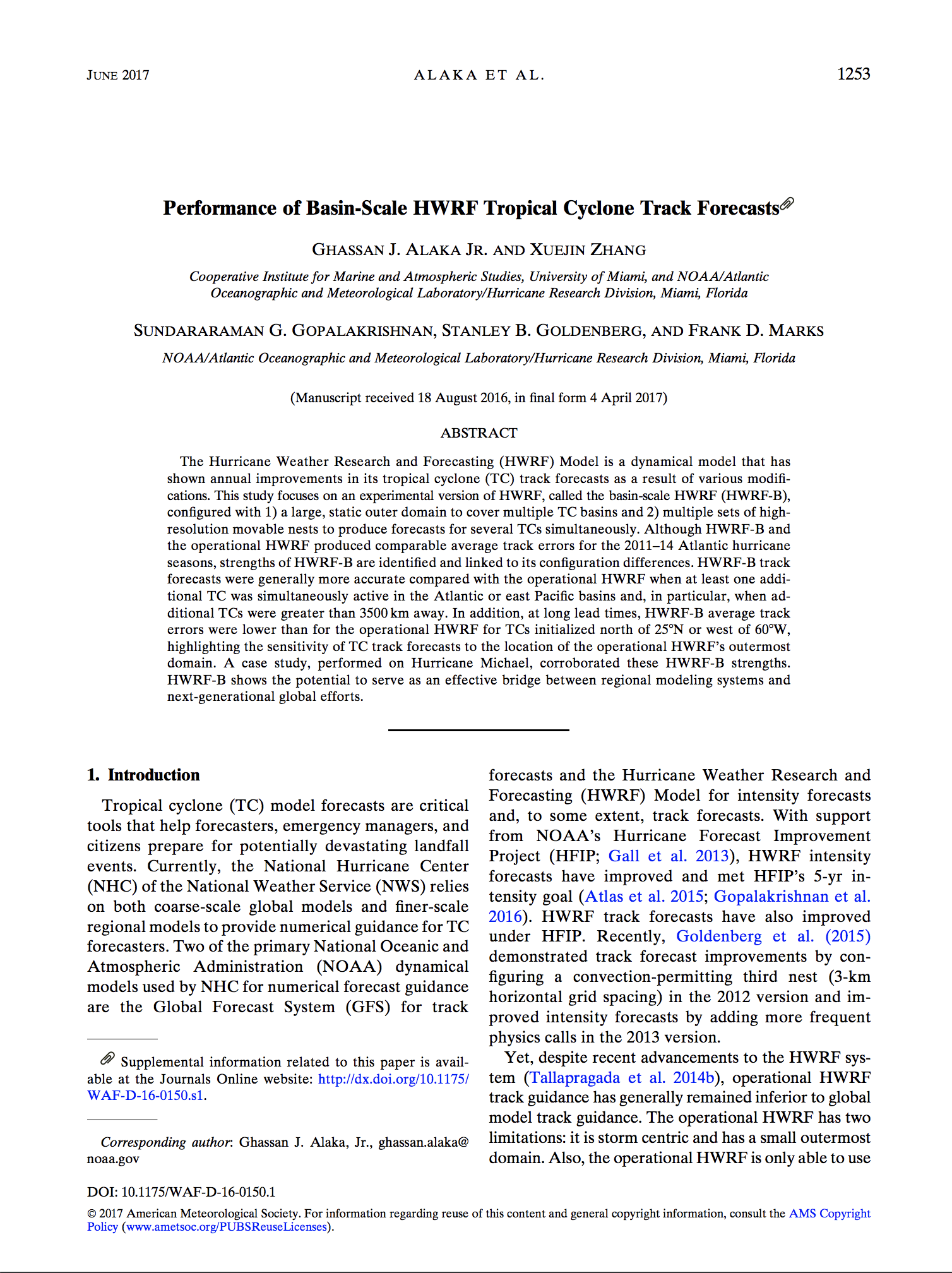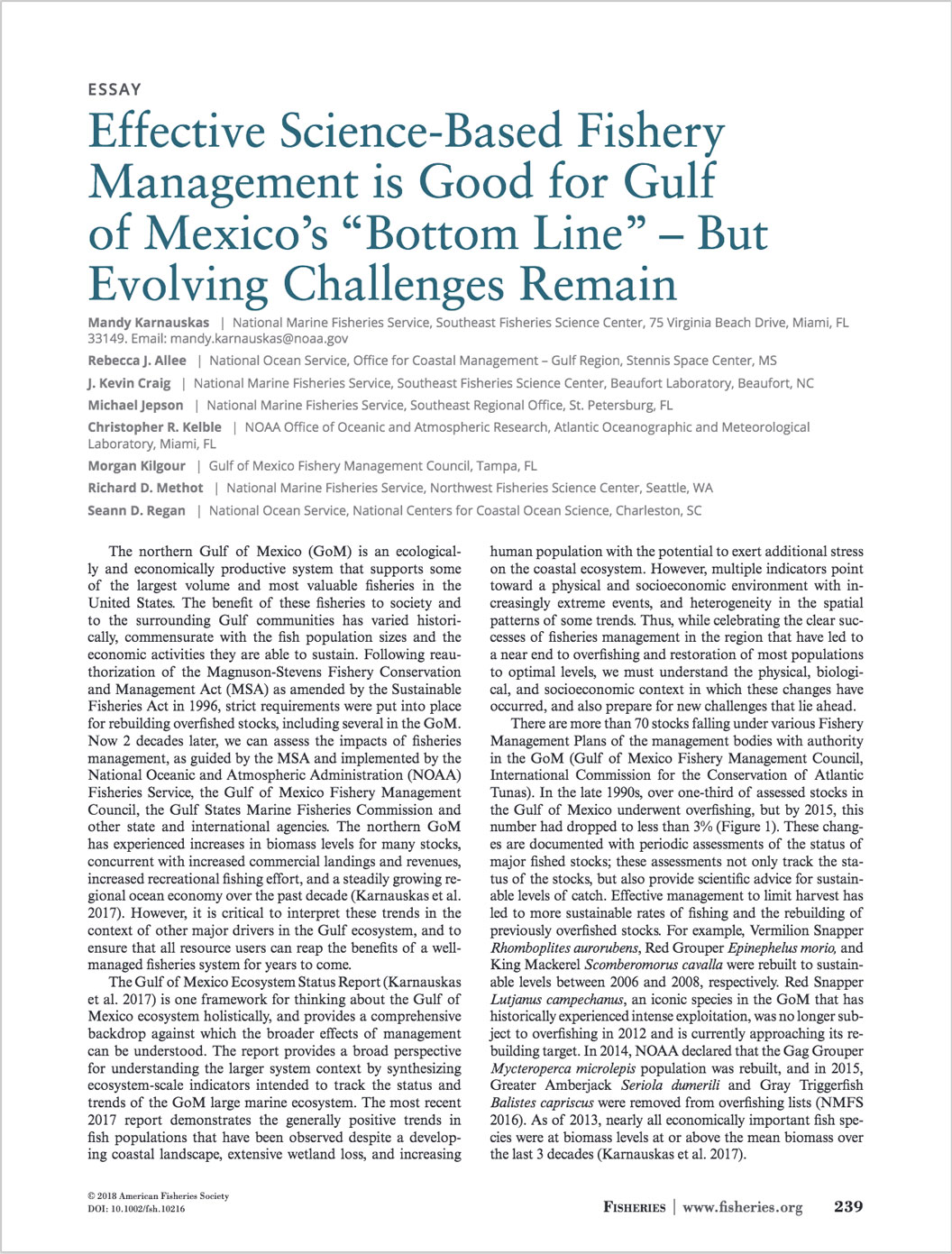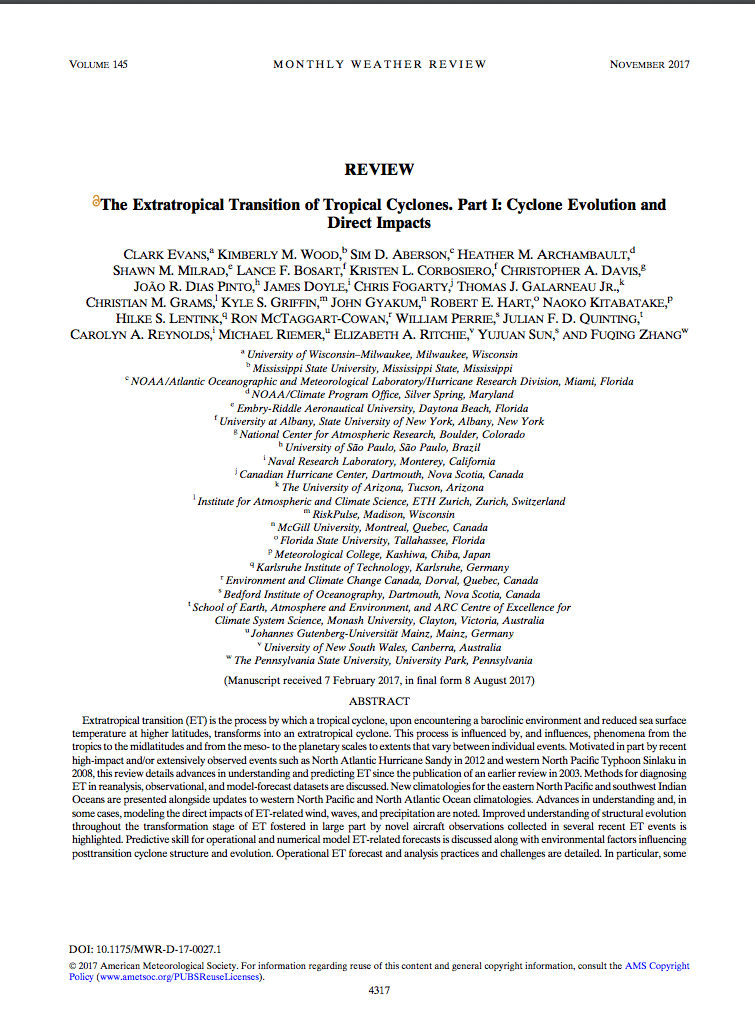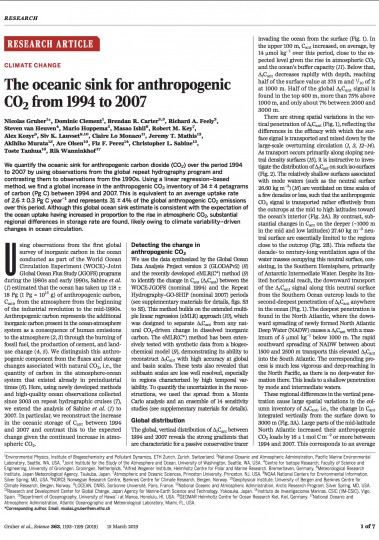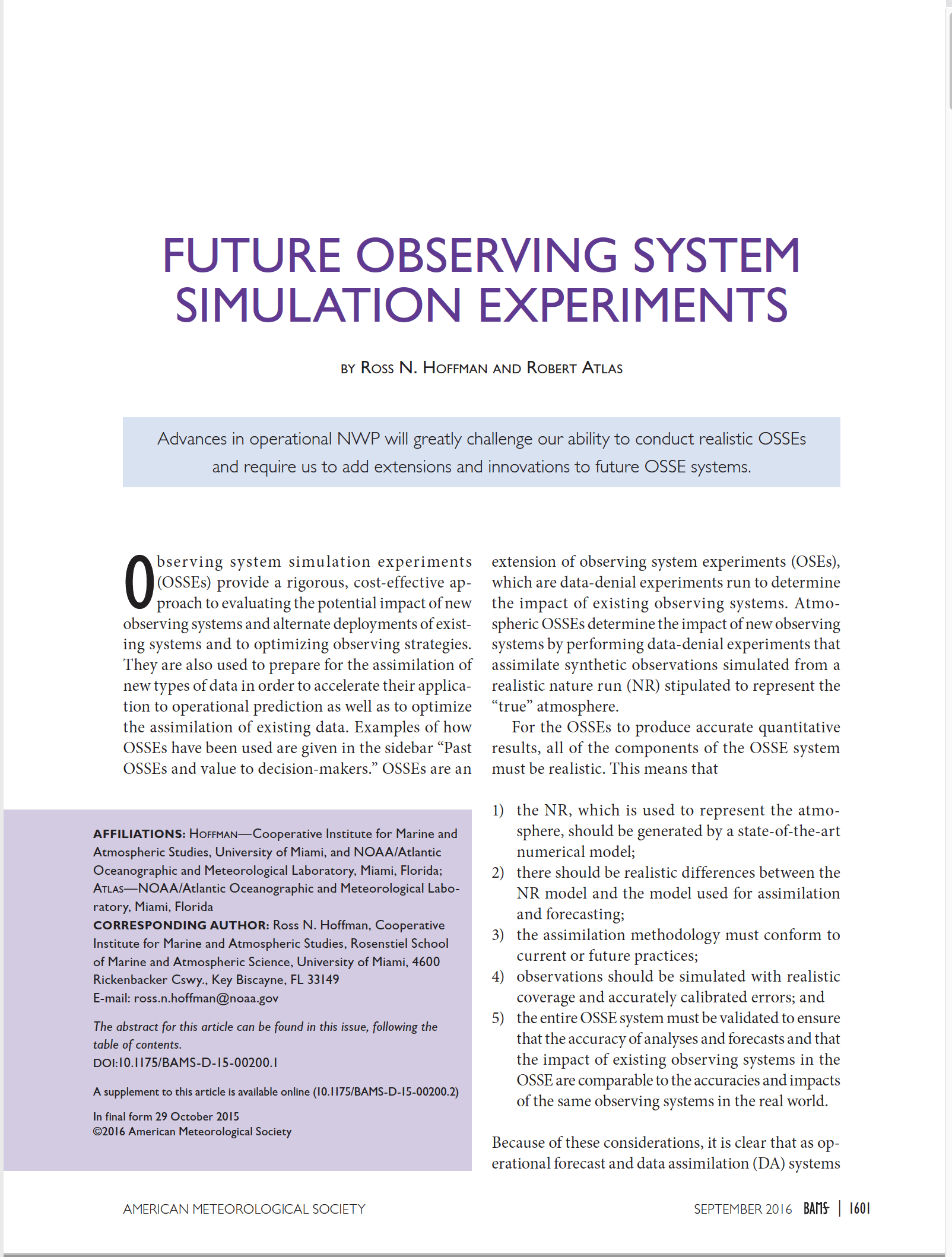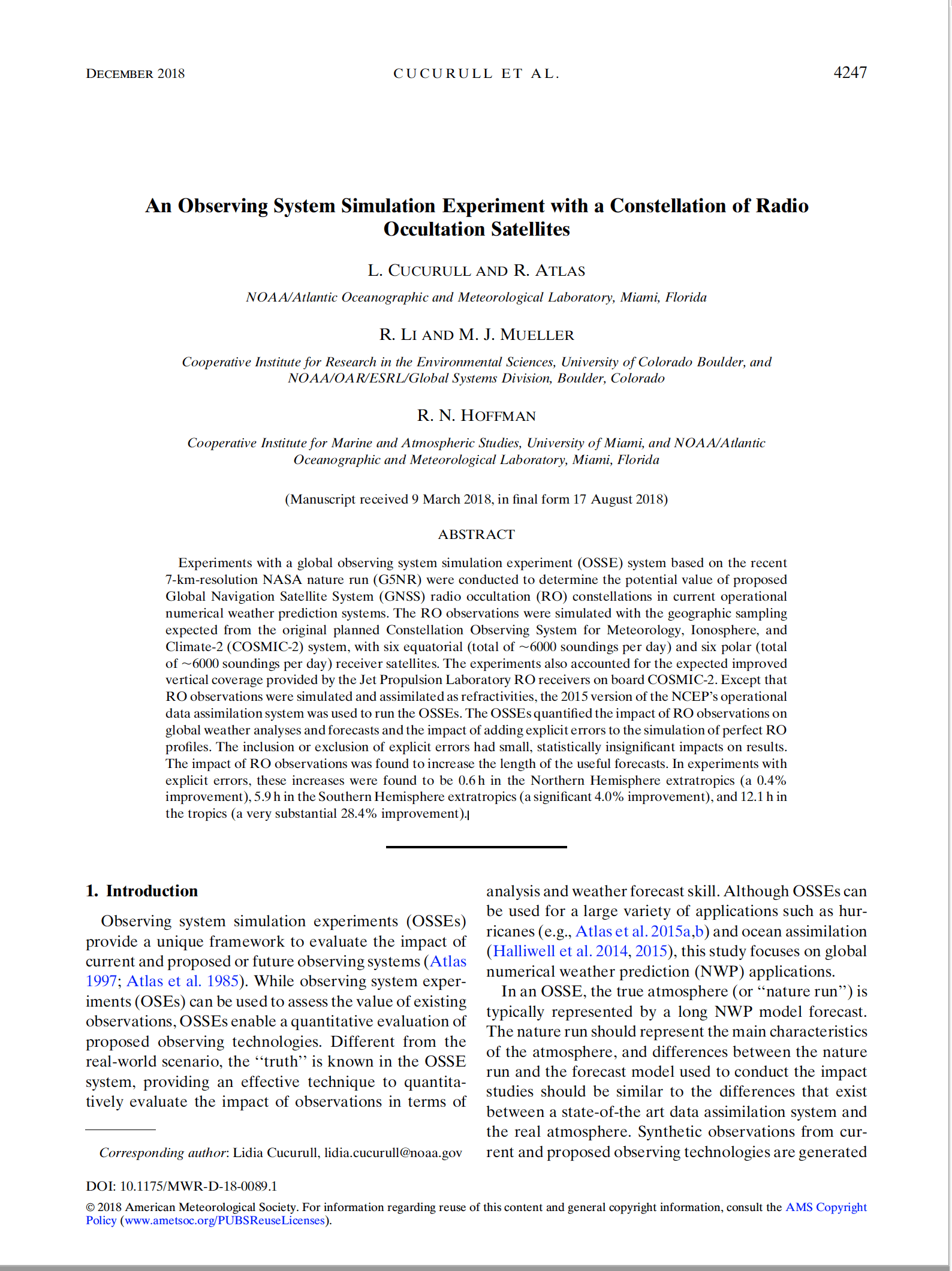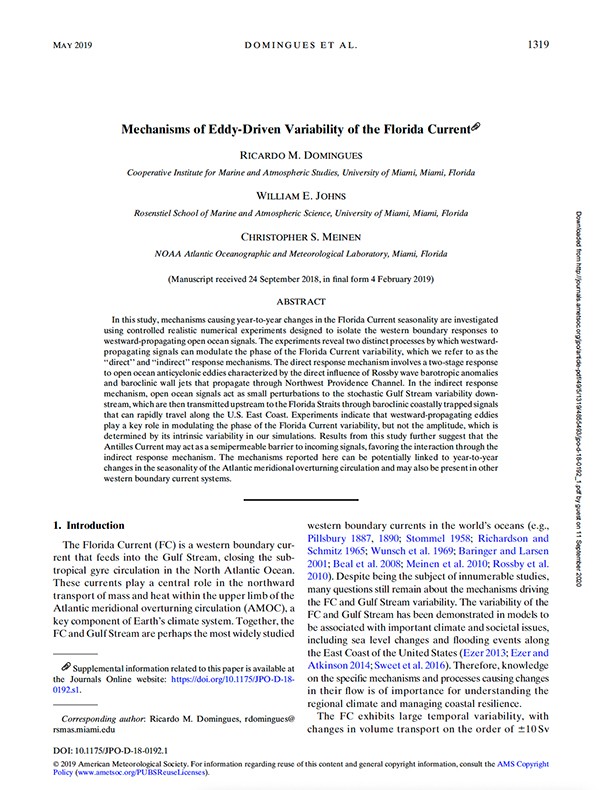The Relationship between Spatial Variations in the Structure of Convective Bursts and Tropical Cyclone Intensification as Determined by Airborne Doppler Radar
Wadler, J.B., R.F. Rogers, and P.D. Reasor. The relationship between spatial variations in the structure of convective bursts and tropical cyclone intensification using airborne Doppler radar. Monthly Weather Review, 146(3):761-780, doi:10.1175/MWR-D-17-0213.1 2018
Abstract: The relationship between radial and azimuthal variations in the composite characteristics of convective bursts (CBs), that is, regions of the most intense upward motion in tropical cyclones (TCs), and TC intensity change is examined using NOAA P-3 tail Doppler radar. Aircraft passes collected over a 13-yr period are examined in a coordinate system rotated relative to the deep-layer vertical wind shear vector and normalized by the low-level radius of maximum winds (RMW). The characteristics of CBs are investigated to determine how the radial and azimuthal variations of their structures are related to hurricane intensity change…
View the PDF Article.
